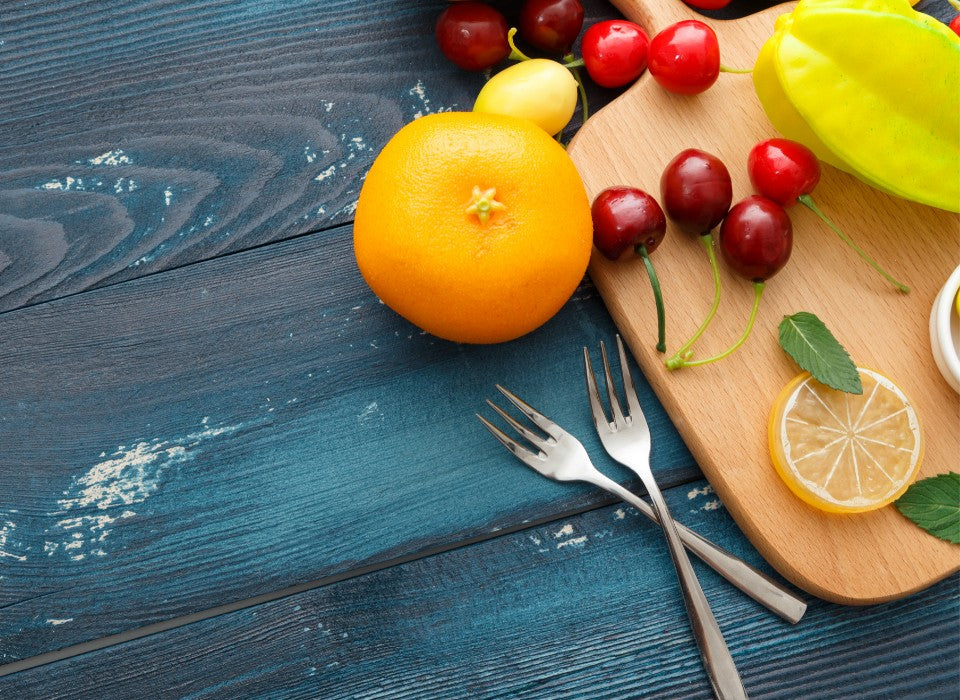
Fruit Contraindication
The text is reproduced from the Lifetimes, all rights reserved to the original author.
Fruit Taboos
These 4 types of people have taboos to eat fruits.
1. People who are prone to diarrhea: eat fewer fruits with tiny seeds
People who are prone to diarrhea should eat fewer fruits such as kiwi, dragon fruit, mul-berry, persimmon, strawberry, fresh wolfberry, melon, watermelon, and grapes.
Fruit seeds are mostly fibrous and cannot be digested and absorbed by the intestines. They stimulate intestinal peristalsis and promote faster excretion of intestinal contents. People with daily dietary fiber deficiency and constipation problems are very suitable for eating these seeded fruits.
2. People with too much stomach acid: Eat less sour fruits
Acidic fruits, such as plums, waxberry, hawthorn and lemon can promote the secretion of gastric acid and digestive enzymes, increase gastrointestinal motility, and thus help digestion, which is very suitable for people with indigestion. However, patients with hyperacidity, chronic gastritis, and the gastric ulcer should eat less of these fruits to avoid stomach upset.
3. Weight loss group: consume fewer fruits with high calorie
People who want to lose weight should eat less high-calorie fruits such as coconut, avocado, and durian. Coconut has a fat content of up to 12%, of which saturated fatty acids account for a high proportion and is not a healthy source of fat. Avocado has a fat content of 15.3%, but 70% is a monounsaturated fatty acid called "healthy fat."
Different from the previous two kinds of fruits, the heat of durian is mainly derived from the super high sugar. Its fat is about 5% and the sugar is as high as 27%. It is an absolute "sweet temptation".
3. Diabetic patients: avoid fruits with the high glycemic index
People with diabetes can eat fruit, but they should be careful when choosing. They should not only pay attention to the amount of sugar but also consider their ability to raise blood sugar, which is often called the "GI value" (glycemic index). For example, although the sugar content of watermelon is low, the GI value is 72, which is a fruit with a high glycemic index, while the sugar content of apples and pears is high, but the GI value is only 36.
Fruits such as apple, pear, peach, apricot, plum, cherry, grape and grapefruit have significantly lower GI values than steamed bun and rice. They are suitable for diabetic patients (about 200 grams per day). Other fruits such as pineapple, mango, watermelon, plantain, banana and kiwi have high GI values. Diabetic patients can consume a small amount of them (about 100 grams per day). Individual fruits such as jujube have a very high GI value and a large sugar content, which is not suitable for diabetic patients.
Eating fruit is also a technical activity. If you eat it right, you can maximize the nutritional value of the fruit.
1. 1~2 fruits per day
Fruits are rich in vitamins and minerals. However, some fruits contain a lot of sugar and it is not good to eat too much. The Chinese Dietary Guidelines recommend that adults should consume 200 to 400 grams of fruit per day. For common fruits such as apples, pears and oranges, ordinary ones can eat 1 or 2 per day.
2. Eat fruit 1 hour after a meal
Eating fruits before meals helps reduce food intake and control weight during meals, but if the stomach is weaker, eating fruits on an empty stomach may cause discomfort. Eating fruit after a meal may cause excess energy, hinder the absorption of nutrients such as minerals, and increase the burden on the stomach. Therefore, it is recommended to eat fruit 1 hour after a meal.
3. If you can eat fruit, don't drink the juice.
To make fruit juice, you will filter the slag, but the slag is rich in nutrients such as dietary fiber which is beneficial for enhancing satiety and reducing cholesterol absorption. In addition, vitamin C and antioxidants in fruits are also damaged to some extent during the process of juicing. Therefore, juice nutrition is not as good as fruit. If you want freshly squeezed juice, you must drink it instantly.
4. Eat different kinds of fruits.
They are all fruits, but the nutritional value of different fruits varies. Eat fruits of various varieties and colors. Don't be superstitious about some kind of fruit with high nutritional value. Don't just eat that kind of fruit.
5. Don't just eat fruits instead of vegetables.
Some fruits have a nutritional value that is not comparable to vegetables. In addition to jujube, kiwi, citrus, strawberry, hawthorn, most fruits have lower vitamin content. Except for mango, citrus and yellow apricots, other fruits contain very little carotene, far less than vegetables.
The content of trace-elements such as calcium and iron in fruits is not comparable to that of green vegetables. Eating too many fruits means eating too much sugar while the sugar content of vegetables is usually low and their calories are low. Eating more vegetables will not affect calorie intake.
6. Can't take fruit as a meal
Although fruits are rich in sugar, vitamins, minerals and dietary fiber, they also lack fat, protein and fat-soluble vitamins. The fruit alone to solve a meal is far from the standard of a nutritious meal.